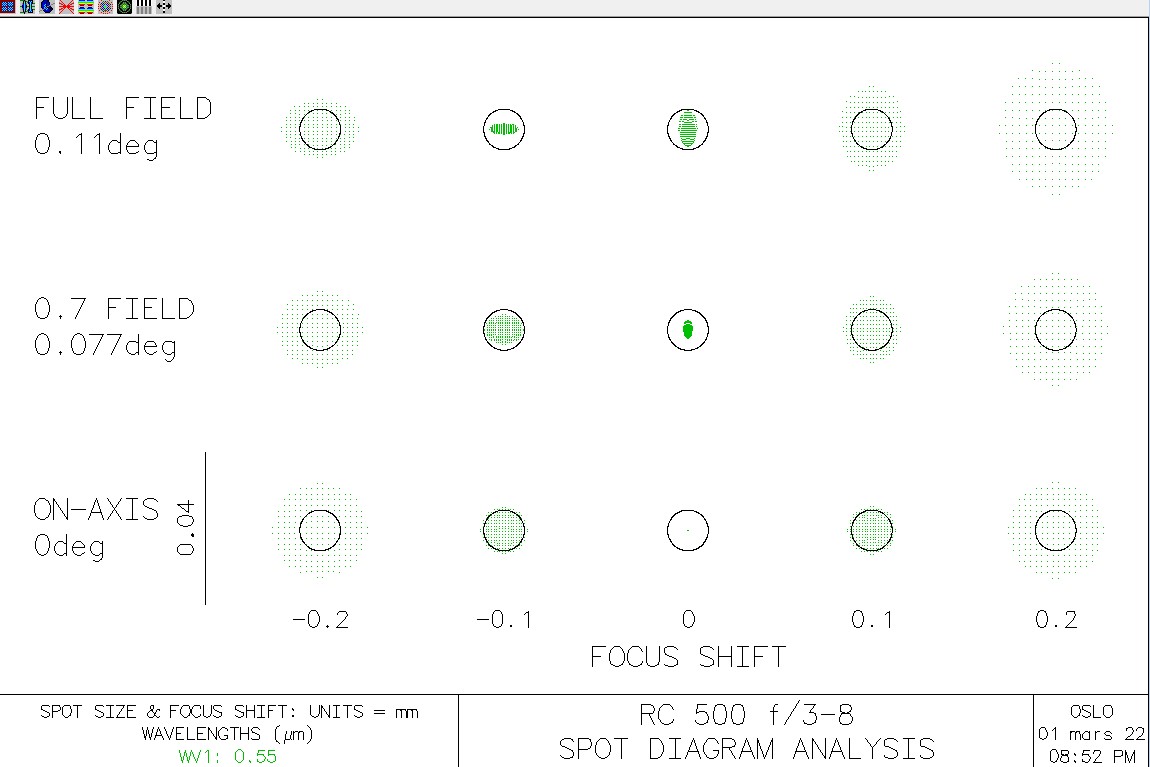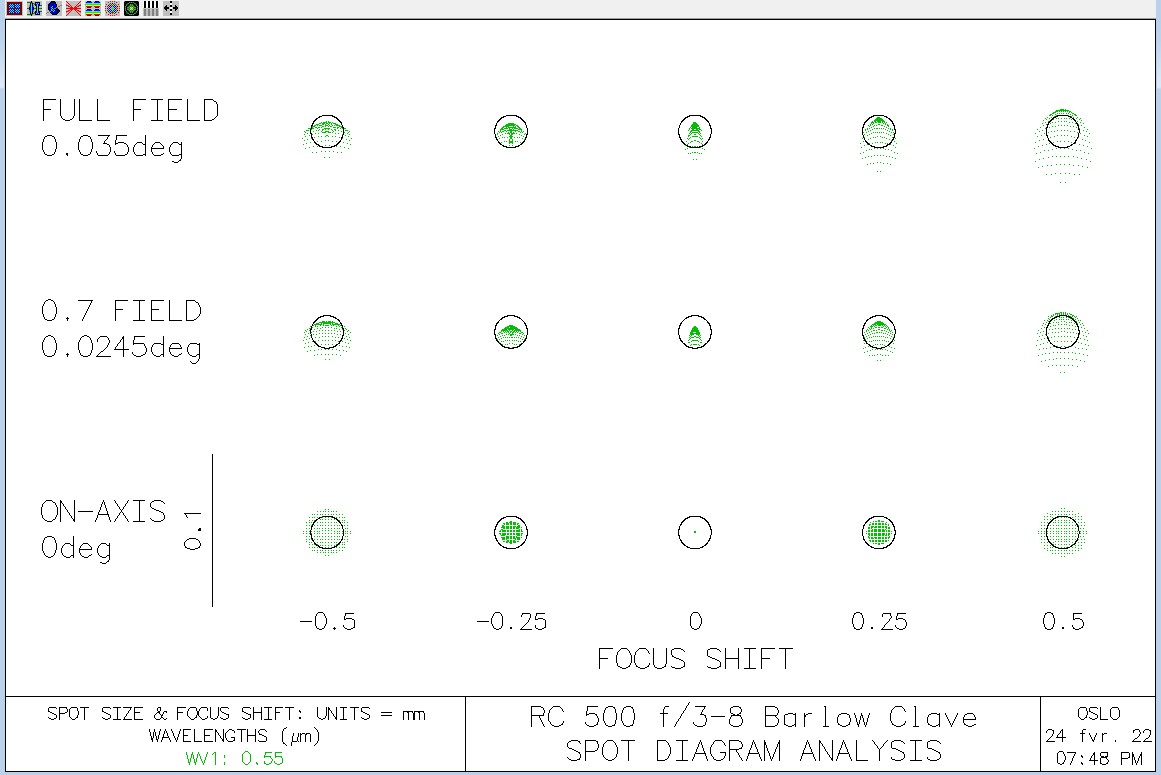Table of contents :
Introduction
Takahashi TOA 130 and 150 in UV
Newtonian telescope
Dall Kirkham 200 mm F/4- F/15, Mewlon 210 F/2.9-F11.9 and Mewlon 250 F/3-F15
Gregory 250 mm F/3.2-F/28.4
Cassegrain 200 mm F/4-F/15 and Cassegrain 350 F4.9-F29.2
Ritchey-Chretien 500 mm f/3-8
Celestron "classic" and Edge-HD versions overview
Celestron 8 classic and Edge-HD
Celestron 14
Celestron 14 with optimized Schmidt plate position
Celestron 8 with optimized Schmidt plate position
Celestron 14 classic and Edge HD
CDK 355 mm F3 - F11.8
Maksutov-Gregory 90 mm f/15.7, Maksutov-Gregory 200 mm f/15,Maksutov-Rumak 200 mm f/10
Barlow lenses
500 mm f/3-8 Ritchey - Chretien telescope
OSLO model:

NB: By comparison, the M1-M2 distance of the Astrosib RC 500
f/3-8 is 994 mm (instead of 1009.1 mm) while the backfocus
(from the surface of M1) is 335 mm (instead of 300 mm).
Sensitivity of Strelh ratio to backfocus:
The RC design is very sensitive to backfocus. In order to keep the
Strelh ratio > 0.9, the backfocus should be within +/- 20 mm of its
nominal value.

By comparison, the field covered by the ASI1600 (4536 pixels ×
3520 pixels × 3.8 microns) at 0.08 arsec/pixel resolution is
0.1° × 0.08°

For the nominal M1-M2 spacing, the radius of the diffraction limited flat field of the RC 500 f/3-8 is 0.11° :

rms Optical Path Difference of a 0.11° radius:

500 mm f/3-8 Ritchey - Chretien telescope with the 2× triplet short Barlow
With the 2× triplet short Balow lens (f = -54.95 mm), the radius
of the diffraction-limited flat field is 0.06° in green light :

500 mm f/3-8 Ritchey - Chretien telescope with the 2× Clavé Barlow
With the 2× Clavé Barlow lens (f=-113.4 mm), the radius of
the diffraction limited flat field shrinks to 0.035° in green
light:. Coma increases dramatically away from the optical axis:

500 mm f/3-8 Ritchey - Chretien telescope with 2× "Long Barlow"
With the 2× "Long Barlow" lens (f=-142.3 mm), the
radius of the diffraction-limited flat field is 0.074° in
green light:

Back to comparison of telescope optical design for high resolution imaging
Return to home page







